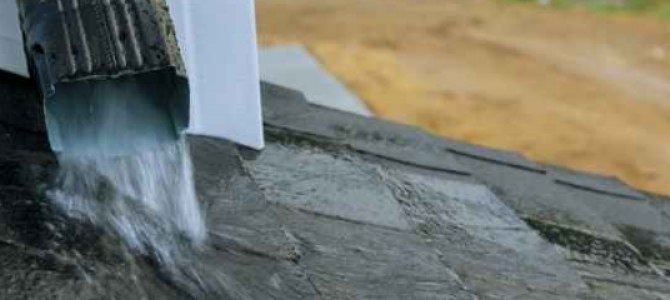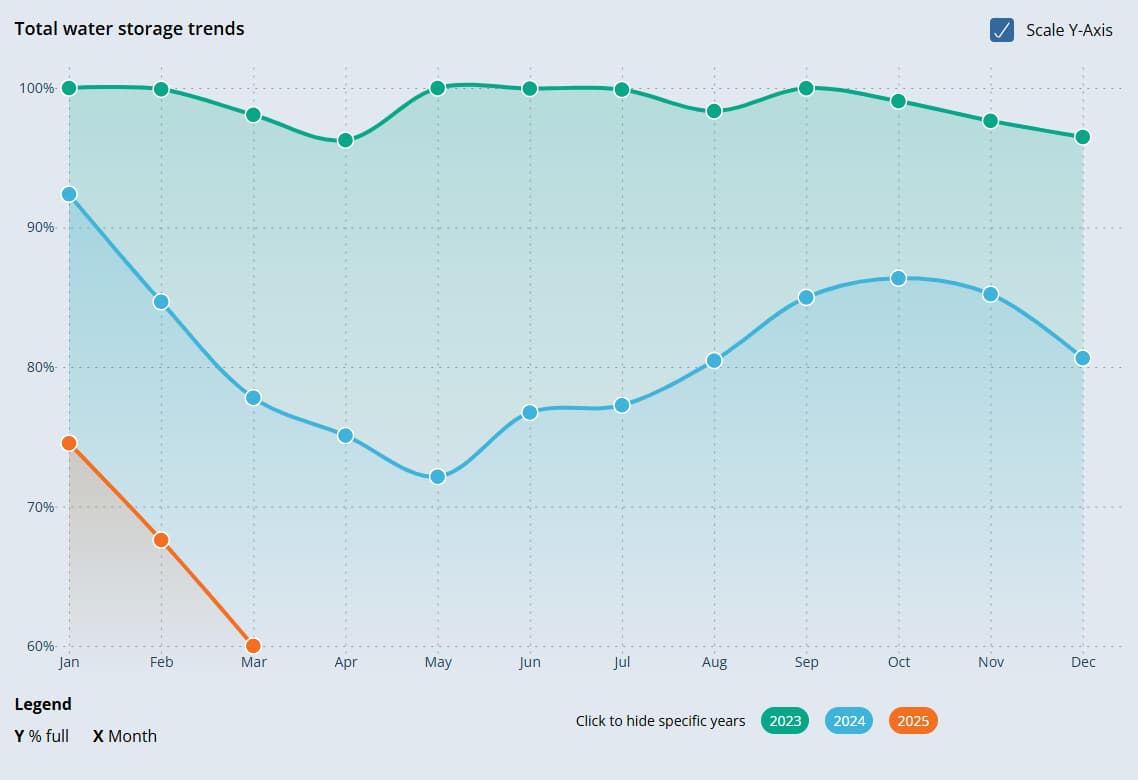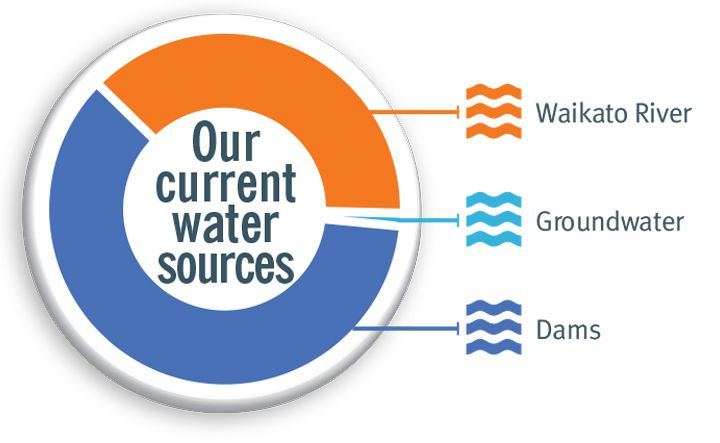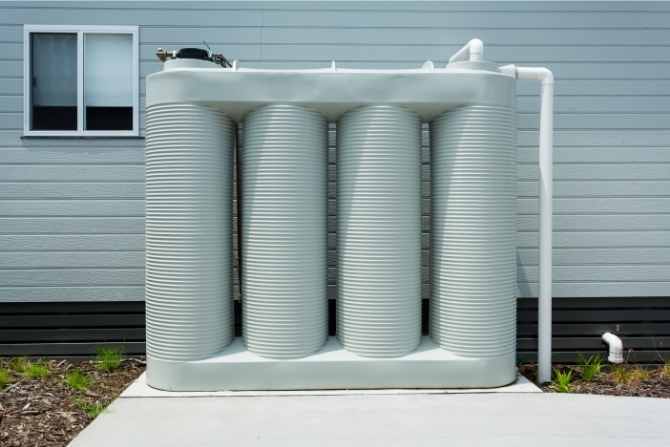 Shopping Cart
Shopping Cart
03 April 2025
Should New Zealand be more proactive in collecting rainwater?

As the annual rainfall in New Zealand becomes increasingly erratic, is there more we should be doing to collect rainwater and put it to good use for homes and businesses? The answer is a resounding yes, especially given the current climate.
Back in August 2020, Stuff questioned the traction of rainwater tanks in New Zealand. At the time, a survey of 66 territorial authorities revealed a mixed bag of support. While some councils like Kapiti and Gore led the way with incentives and requirements for rainwater harvesting, many remained neutral.

Fast forward to 2025, and the situation demands a more urgent and proactive approach. This summer has once again left much of the country in drought conditions and whilst we are heading into the autumn and winter months, the lack of rainfall for many part of the country has put a lot of stress on farmland, golf courses and other green spaces, not to mention residential gardens and public spaces.
The Climate Has Changed: Droughts and Dam Levels
Since 2020, water restrictions have become commonplace, particularly in Auckland. The severe drought of 2019-20 saw dam levels plummet to critical lows, leading to strict water usage rules. While Auckland's dam levels have recovered somewhat, they are once again below average, and the risk of future droughts remains a significant concern for residential, commercial and agricultural water users.
The cost of supplementing water supplies, like drawing from the Waikato River, is substantial and will impact water bills for years. It's time to future-proof our water supply by embracing rainwater harvesting on a larger scale.

In the summer of 2025, Auckland was once again reliant on drawing water from the Waikato River. Up until the end of March, Auckland was drawing approximately 40% of its water supply from the Waikato River, with 60% coming from dams.
With dams at just under 60% capacity, we are not quite at the levels of 2019, however, if we get a dry winter followed by another dry summer, then we could be looking at a very similar scenario where water restrictions are a real possibility.

Homes and businesses should be planning ahead and thinking about how they can combat potential water restrictions now. Installing a water tank as we head into winter is the perfect time as you will benefit from storing up the water that you can collect over the wetter months before we reach the drier conditions of the summer.
Future-Proofing with Rainwater Harvesting
The concept of future-proofing is key, especially for new build properties. Integrating rainwater harvesting systems from the outset is far more efficient and cost-effective than retrofitting later. However, retrofitting existing homes is also a viable and increasingly necessary option.
Slimline Tanks: A Practical Solution
One of the barriers to rainwater harvesting has been the perception of bulky, unsightly tanks. Fortunately, advancements in tank design have led to the rise of slimline water tanks. These tanks are more practical for many households, fitting neatly against fences or along the sides of buildings, maximising space while still capturing valuable rainwater. These tanks also often fit in with updates to the resource consent programme, meaning they often don’t require consent to install.

Policy Changes and Incentives
Auckland Council has taken steps to encourage rainwater harvesting, including removing resource consent fees for residential installations. However, more widespread policy changes and incentives are needed across the country to make rainwater harvesting a standard practice.
In further changes to the Auckland Unitary Plan and Hauraki Gulf Islands District Plan, rainwater harvesting became even more accessible with updates to the plan meaning that in most residential zones, you may not need resource consent if:
- your tank is placed at least 10m away from a stream, 30m away from a lake or 10m away from the coastline
- the tank is not placed between the front of the building and the street
- your tank is not higher than 3m if placed in a side or rear yard
- your tank is installed completely below ground level when sited in a designated ‘outdoor living space’ area
- your tank is no higher than 1m when sited in a required ‘outlook’ area
- your tank overflow drains to the existing onsite stormwater discharge point (where the stormwater ran before your rainwater tank was connected)
- your tank overflow does not flow across an effluent dispersal area
You should still always check before you start a project, however, these are at least steps in the right direction towards encouraging more people to invest in water tanks for rainwater harvesting.
Calculating Your Harvestable Water
There are several different calculations that people use to work out how much water can be captured and stored but we like this model:
1. Estimate the size of your roof by calculating the length x width of your property. You can also visit websites like homes.co.nz where you can find out the overall size of your property and use this as a guide i.e., 170m²
2. Look up the annual rainfall for your area. Head over to the NIWA website where you will find that information.
Once you know these two bits of information, then it’s a simple equation to calculate your harvestable water potential:
Litres per square metre of catchment x catchment area (roof area) = litres of harvestable water
You can calculate the litres per square metre of catchment based on the annual rainfall for your area. The annual rainfall for your area in mm is equal to the litres per square metre of catchment.
Example:
The average rainfall in Auckland is 1,114mm per year. My property is 172m².
1,114 litres x 172m² = 191,608 of harvestable water per year
You can read more about rain collection and the size of water tank you might need in our recent post, What size water tank do I need?
Smart Water: Monitoring for Efficiency
Whether you're in a residential, commercial, or agricultural setting, monitoring your water tank levels is crucial for efficient water management. Smart Water provides state-of-the-art monitoring systems that deliver accurate water level readings via an easy-to-read display or our app. Our award-winning technology helps you track water consumption and make informed decisions about water usage.
A Call to Action
New Zealand needs to be more proactive in collecting rainwater. By embracing rainwater harvesting, utilising innovative solutions like slimline tanks, and leveraging smart monitoring technology, we can reduce our reliance on mains water supplies and create a more sustainable future.
First Published 29 October 2021 and Last Updated 3 April 2025
